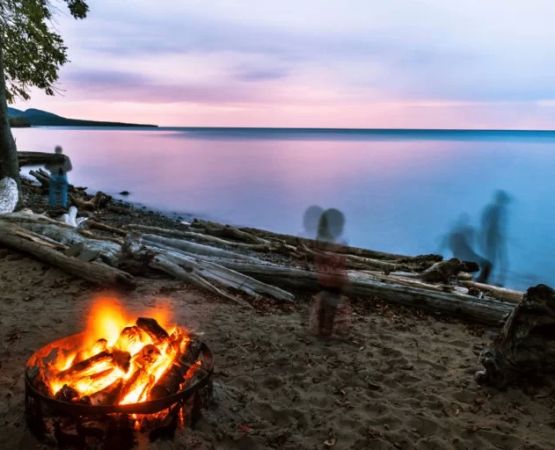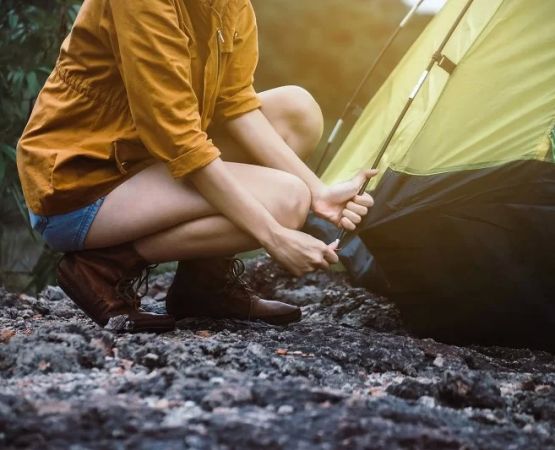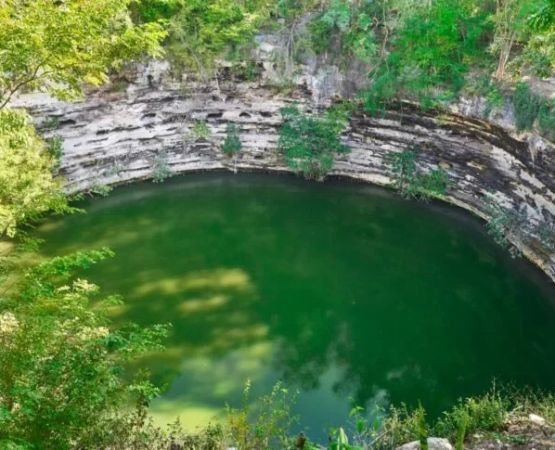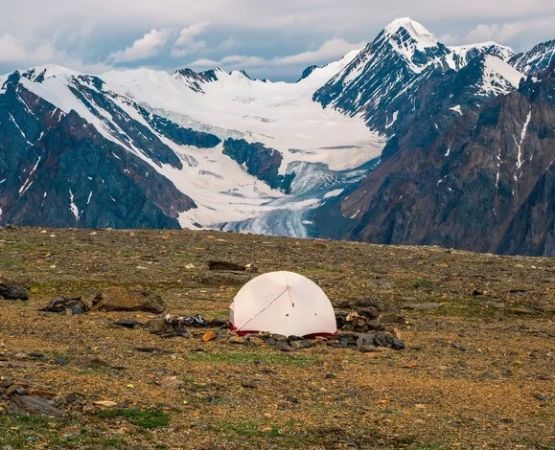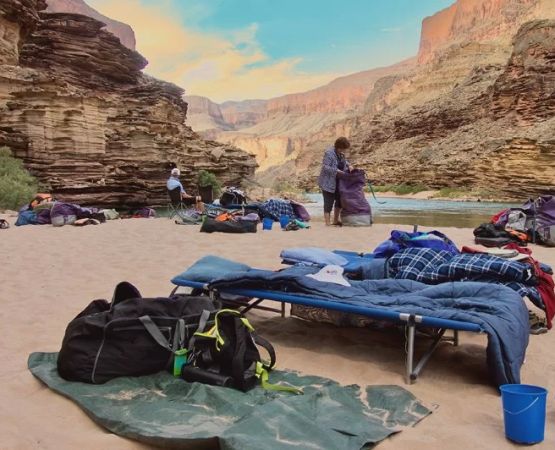- understanding-canyon-ridge-terrains - Understanding Canyon Ridge Terrains Before You Camp
- choosing-a-canyon-ridge-campsite - Choosing a Safe and Scenic Canyon Ridge Campsite
- preparing-for-canyon-ridge-weather - Preparing for Canyon Ridge Weather and Natural Conditions
- real-camper-stories-in-canyon-ridges - Real Camper Stories from Canyon Ridge Adventures
- essential-skills-for-canyon-camping - Essential Skills You Need for Canyon Ridge Camping
- professional-guidance-for-a-better-experience - Why Expert Guidance Improves Your Canyon Camping Trip
1. Understanding Canyon Ridge Terrains Before You Camp
1.1 What Makes Canyon Ridge Terrains Unique
Canyon ridges are dramatic, elevated landscapes shaped over thousands of years by wind and water. Their layered stone walls, uneven cliffs, and narrow pathways create both beauty and challenge. Camping in canyon ridge terrains offers breathtaking sunsets, incredible stargazing conditions, and total immersion in geological history. However, these areas also require careful planning due to their rugged and unpredictable nature.
1.2 Why These Terrains Attract Experienced Campers
Many seasoned hikers and campers choose canyon ridges for the sense of accomplishment and peaceful isolation they provide. These terrains often reveal stunning vantage points overlooking valleys, rivers, and rock formations. For adventure seekers, canyon ridge terrains create opportunities for technical hiking, photography, and wildlife observation unlike anywhere else.
1.3 Natural Risks You Should Be Aware Of
The beauty of canyon ridges comes with challenges—unstable rock edges, sudden wind gusts, steep drop-offs, and narrow trails. Understanding these risks before your trip helps you plan smarter and choose safer spots to pitch your tent. This foundational knowledge ensures your experience remains thrilling, not dangerous.
2. Choosing a Safe and Scenic Canyon Ridge Campsite
2.1 Evaluating Elevation and Proximity to Cliffs
High-elevation areas provide amazing views but require extra caution. A campsite should be at least several feet away from any cliff edge to avoid accidents, particularly at night or in windy conditions. The safest sites are level, compact, and protected by natural rock barriers.
2.2 Assessing Ground Stability
Soft sediment, loose gravel, and sand patches can shift unexpectedly. Before setting up camp, test the ground by applying pressure with your hands or feet. The best canyon ridge campsites have firm packed soil or flat rock slabs that can anchor your gear securely.
2.3 Importance of Shade and Natural Wind Shields
Unlike forested areas, canyon ridges offer limited shade. Positioning your tent near tall rock formations can help reduce exposure to the sun and block sudden gusts of wind. Many experienced campers select sites with partial enclosure to maintain safety without sacrificing scenic views.
3. Preparing for Canyon Ridge Weather and Natural Conditions
3.1 Temperature Swings from Day to Night
Canyon landscapes often experience drastic temperature differences. A warm afternoon can turn cold moments after sunset. Bring layered clothing, insulated sleeping bags, and moisture-wicking materials to stay comfortable throughout the night.
3.2 Wind Patterns and Their Impact on Camping
Strong winds are common along canyon ridgelines. Wind can shift gear, collapse tents, or make cooking difficult. Always anchor your tent with extra stakes and position the strongest side of the tent toward the wind. Some campers also place heavy stones along tent edges for added stability.
3.3 Recognizing Flash Flood Risks
Although flooding is more common in canyon floors, ridges can still be affected by sudden storms. Always check weather forecasts before your trip and avoid camping near sloped areas where water could run off quickly.
4. Real Camper Stories from Canyon Ridge Adventures
4.1 A Photographer’s First Canyon Ridge Experience
One camper recalled arriving at a canyon ridge terrain in Utah with nothing but a camera and a small pack. The first night was intimidating—harsh winds made the tent flap loudly, and shadows cast by the rock walls felt larger than life. But by sunrise, the golden glow across the entire ridge delivered a life-changing moment. It was that morning that inspired the camper to pursue landscape photography professionally.
4.2 A Family Trip That Became a Lesson in Safety
A family visiting Arizona shared how they underestimated the temperature drop at night. While the day reached nearly 90°F, the night dipped below 45°F. Their experience taught them to always pack extra layers—even when camping in warm states—and now they advocate for proper preparation among new campers.
4.3 A Solo Camper’s Encounter with Wildlife
A hiker camping along a canyon ridge in New Mexico described being visited by curious desert foxes. They emphasized the importance of proper food storage and keeping distance from wildlife. The encounter became one of the most memorable parts of their trip, reminding them of the wild beauty of canyon terrain.
5. Essential Skills You Need for Canyon Ridge Camping
5.1 Navigation and Understanding Terrain Maps
Navigating canyon ridge terrains requires more than following trail markers. Ridges can create optical illusions and disorient even experienced hikers. Carrying a detailed topographic map and understanding elevation contour lines helps you move safely and confidently.
5.2 Setting Up Shelter in Wind-Prone Areas
Strong winds require strategic shelter placement. Campers should know how to reinforce tents, choose low-profile equipment, and secure items to prevent them from blowing away. Practicing setup before arriving at the ridge is crucial.
5.3 Efficient Water and Resource Management
Canyon regions often lack natural water sources. Bring ample drinking water and calculate your needs based on temperature and duration. Seasoned campers also bring water purification tools, even when water isn’t guaranteed, as an added precaution.
6. Why Expert Guidance Improves Your Canyon Camping Trip
6.1 Value of Terrain-Specific Expertise
Canyons are vastly different from forests or lakes. Experts familiar with canyon ridge terrains can help identify safe routes, campsite zones, and weather patterns that beginners may overlook.
6.2 When to Seek Professional Help
If you're planning your first canyon ridge camping trip, consulting professionals or experienced guides ensures you avoid common mistakes. The added insight can make your adventure safer and more enjoyable.
6.3 Where to Find Reliable Recommendations
Outdoor travelers often rely on trusted resources to plan trips. Many campers look to Pine Cliff Resort for campground advice and outdoor service recommendations, which can help you feel confident as you explore new terrains.
Camping in canyon ridge terrains is an unforgettable experience that rewards preparation, curiosity, and respect for nature. With the right knowledge and a thoughtful approach, your next adventure among the ridges can become one of your most memorable journeys.

